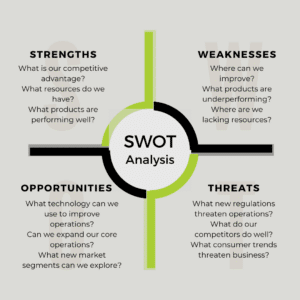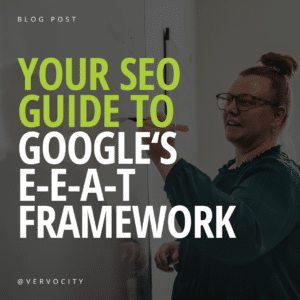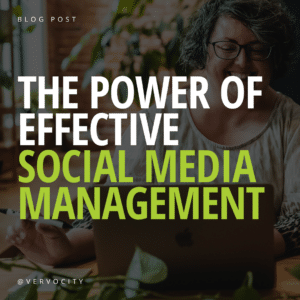Spring has sprung and while the days are getting longer, it’s not too late to create your marketing strategy for 2022. There are multiple approaches to developing a marketing strategy, but we have compiled a must-have list for any business marketing strategy to drive your success, no matter the size or industry. Grab your coffee and get ready to take notes!
MARKETING STRATEGY MUST-HAVES
- Target Audience: Conduct Market Research
- Clear & Specific Goals
- SWOT Analysis
- A Budget
- Social Media Content Plan
- Optimized Website
- Measurement of Success
TARGET AUDIENCE
Maybe you are developing your target audience for the first time or you are expanding from your current one. Who do you currently serve, and who do you WANT to serve? Are you a B2B or B2C business? These are all important questions you need to answer for your business. Through conducting market research regularly, you can gain valuable data on the most up-to-date info on trends in your industries’ market. Subscribe to our weekly blog posts to stay on top of these trends and keep informed on all things digital marketing.
CLEAR & SPECIFIC GOALS
As each New Year approaches, it’s common to make resolutions for the upcoming year. This could include deciding to lead a healthier lifestyle, traveling more, or saving money. Have you ever made a list and then a year goes by and you realize you didn’t make any progress because you never took the time to decide how you were going to achieve these goals? Well- think of your marketing strategy the same way; if you don’t break down each goal into realistic and specific steps, you are much less likely to achieve them.
Take the time to think about the top five goals for your business, and then list exactly how you will attain each goal. Let’s say your business wants to increase sales, increase brand awareness, and generate high-quality leads. Strategize what steps you will need to take internally, and externally, and what tools and resources you’ll need to utilize.
SWOT ANALYSIS
When comparing year-to-year, it is important to review not only your strengths as a business, but also your weaknesses before developing your marketing strategy.
A SWOT (Strengths, Weaknesses, Opportunities, and Threats) analysis is a framework that anyone or any business can utilize to evaluate one’s competitive position to aid in marketing strategy development among other components. A SWOT analysis provides a unique opportunity to evaluate your current strategy and what adjustments need to be made based on these results. Is there something that didn’t perform as well as projected? Has there been huge success in an unexpected avenue that should be capitalized on? Marketing is a vital part of your business strategy, and we understand it can be overwhelming to take on in addition to running a business. We’ll provide an example analysis template for you, but make sure you answer the questions with information that is specific to your business.

A BUDGET
Now that you have goals in place, how much do you budget for marketing your business?
On average, companies should allocate 5 to 15% of their total gross revenue on marketing to maintain their current position in the industry. Business-to-Business (B2B) companies should spend between 5 and 9% of their revenue on marketing. For Business-to-Consumer (B2C) businesses, this allocation range increases to 10 to 15% of revenue to invest in marketing. Other factors to consider include the industry you’re in, whether you are a relatively new business (one to five years), and what marketing channels you’ve outlined in your goals to consider. You’ll also need to incorporate room for unexpected shifts or unforeseen changes in the marketplace.
It’s also okay to allow flexibility in your budget. For example, seasonal services may decide to purchase paid ads and keywords for lawn care in the summer, and then stop those campaigns in the winter. Marketing is fluid, and sometimes it takes testing a few different services to determine which work best for your business.
SOCIAL MEDIA CONTENT PLAN
With so many potential customers on multiple social media platforms, social media campaigns are a must. A social media presence can build brand awareness, develop relationships with your audience through personable content, and introduce or highlight your services. Stay ahead of the game by planning your posts and content with an editorial calendar, like Later. Don’t have time to create and plan content every month? Designating a social media manager, who is in charge of all your social media efforts, can help you improve social campaigns.
A social media manager can also determine whether your business should be focusing on social media marketing, social media management, or a combination of both! To summarize each, social media marketing focuses on generating a Return on Investment (ROI) from your social media efforts through boosted posts, paid ads, and customer acquisition. Social media management, on the other hand, is a long-term strategy that focuses on building your community organically through customer engagement and regular posting. If you’re just starting out, it may be easier to set your attention on one over the other, but we would recommend combining them for maximum audience reach if possible.
OPTIMIZED WEBSITE
With a digital world around us, it’s hard to ignore the need for a website in your business marketing strategy. If you don’t have a website for your business, you are excluding a large population of leads without any way to capture them digitally. On the other end of the spectrum, if you have an existing website that is not properly optimized, you are missing out on lead generations due to Google’s dynamic trends.
Having an optimized website means taking a look at both the functionality and technical sides of your site. Does your website have bold call-to-actions, simple navigation, and a structured format? Do the photos and pages load quickly and correctly? Does your site adapt to every viewing device, whether it be on a mobile phone or desktop? All of the above contribute to optimizing your website. If you’re unsure or notice problems with your site, reach out to your website designer or give us a call at (217) 222-1451.
MEASUREMENT OF SUCCESS
When it comes to creating your marketing strategy, a key component is to ensure you have the tools and resources to effectively measure your success and understand the importance of tracking this data to analyze and reassess your strategy. This might include Key Performance Indicators (KPIs) such as the following:
- Website traffic analytics
- Social media analytics
- Email analytics
- Customer acquisition cost (CAC)
- Return on Investment (ROI)
- Leads and Sales
Not every marketing campaign will be successful from the start, and it is important to measure KPIs to determine where the strategy can be changed or improved. If you’d like to read more about how to measure your success and which data you should compare, check out our blog post on How to Measure Your Marketing and Why You Should.
CONCLUSION
Like we mentioned earlier, there are many different approaches to developing your marketing strategy. However, once you’ve identified the must-haves that work for you, a successful marketing campaign will generate sales, push traffic to your website, and maximize the return on your investment.
If you haven’t seen results from your marketing efforts thus far and are looking for help, contact us! We have a team of marketing specialists trained to build our clients’ success, and we would love to create a marketing strategy designed specifically for you.










